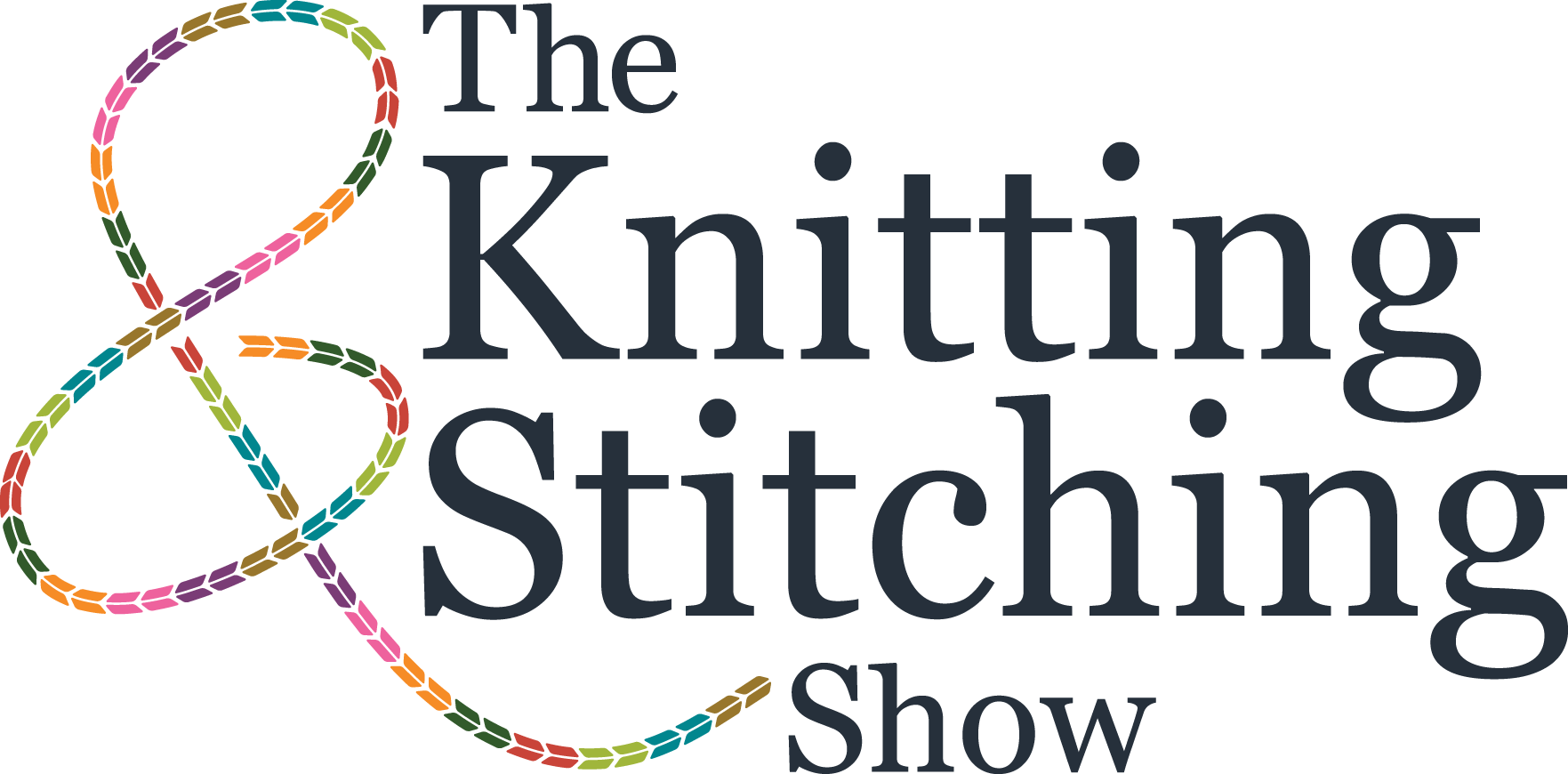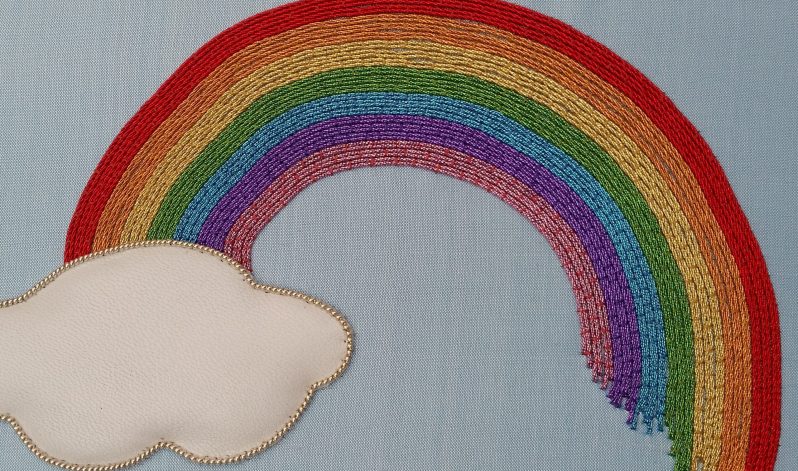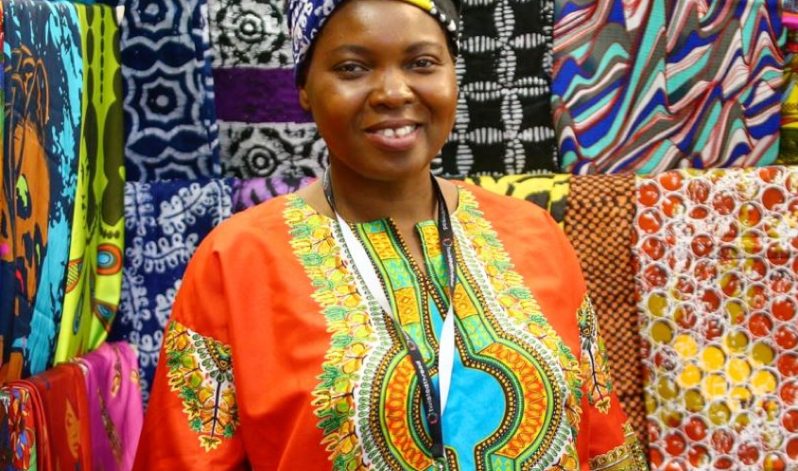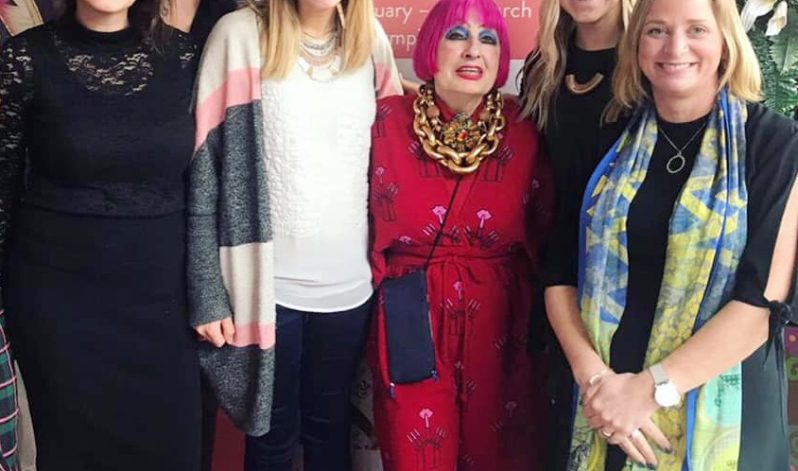Nov 02, 2022
0 comment
James Fox is a Lancashire-based textile artist working in machine embroidery and reverse appliqué. His exhibition, Right to Roam,, is at The Knitting & Stitching Show at Harrogate Convention Centre from 17th-20th November 2022.
James, your Harrogate exhibition is a celebration of freedom of movement and includes a homage to the humble bicycle. Can you tell us more about why bikes were so inspiring to you for this particular body of work?
The invention of the ‘safety bicycle’ in the 1880s, as well as the development of the railway system, allowed movement around the country as never before. The working class were able to get out of the grime from the factories and cycle into the countryside on their day off. And the owners of the factories they worked in could travel by train to their recently acquired shooting estates for the weekend. At the same time, the rise in socialism was spreading across Europe. These two factors inevitably joined forces and the rise of socialist cycling clubs sprang into existence all over the countryUsing these historical factors, I began a series of works which also involved contemporary subjects like alternative transport policies, climate change, social reforms and ‘working class’ concerns. I found further inspiration in ‘Bikestormz’ which is a recent phenomenon in bicycle culture where inner city youth take to the street on their bikes and pull ’wheelies’ in a show of defiance and solidarity against knife crime and violence. Another cycling issue which sparked my interest involves the plight of zero hours contract cycle couriers who were striking for fair wages and working conditions.The safety bike also contributed to the women’s rights movement. To quote Susan B. Anthony, “the bicycle has done more to emancipate women than any one thing in the world.” She would go on to write: “I rejoice every time I see a woman ride by on a bike. It gives her a feeling of self-reliance and independence the moment she takes her seat; and away she goes, the picture of untrammelled womanhood.”
Trade union banners have also influenced your work, and your exhibition features a Right to Roam banner. Can you tell us how you’ve drawn on these historic stitched protest works to influence your art today?
Trade union banners have been a source of fascination to me for years. Their representation and celebration of communities, unions and organisations, highlighting unity, compassion and strength with the added bonus of craftsmanship, design and pride. My works, NOT NOW TORY BOY and Right to Roam, give a nod to the tradition of banner makers from the past and are used to comment on contemporary themes. The use of pithy headlines from the press to dilute serious political and social issues, as well as celebrating historical important occasions and their influence on current issues, inspired NOT NOW TORY BOY.
You have long been an observer of social, political and economic change, and social commentary is an integral part of your work, woven into your designs. Is there something unique about textiles and stitching that lend themselves particularly well to the language of protest?
Textiles, although often derided for the association they have with domesticity, is, I believe, actually an important vehicle for commenting and sometimes criticising society. Using art, and in particular textile art, and even more specifically, embroidery, as a protest/activist statement, can be a valid and important means of responding to cultural, social and political situations. Textile art and its part in protest and political activism can be seen through history from the Bayeux Tapestry to Union banners, Aids quilts and the more recent interest in Craftivism.
You have an art residency with Lancaster and District Homeless Action Service where you have been working with clients to create embroidered stitched portraits. A touring exhibition has been promoting action to support the homeless. What has this experience meant for you personally and for your art practice?
I had been volunteering at LDHAS for a number of years as well as artist in residence for two years; delivering art workshops as well as producing art works which were then gifting works to local schools, hospitals and public buildings as goodwill gestures and community participation. During this time, I built up a relationship with some of the clients and decided to do some work around the theme of homelessness. I suggested drawing a series of their hands which I found fascinating; they suggested I draw their faces. At first, I thought this would be intrusive and perhaps even taking advantage of their situation. Homelessness can make you feel unwanted and invisible, so, for some, to have someone spend time invested in you as a person can be a positive thing in a life filled with negativity.In the 2020 pandemic, the homeless service closed due to Covid (it reopened in 2021). The government’s scheme to get rough sleepers off the streets (‘Everyone in’), which was mainly due to the perseverance of Baroness Louise Casey, former homelessness czar, was implemented. Unfortunately, this was short lived and according to the homeless charity Crisis,“It is predicted that the aftermath of the COVID-19 pandemic risks a substantial rise in core homelessness, with overall levels expected to sit one-third higher than 2019 levels on current trends. Levels of rough sleeping are also predicted to rise, despite the Government’s target of ending this form of homelessness by 2024 (Crisis, 2022).”The experience of working with this group of people opened my eyes to a system that is almost impossible to navigate once you enter it. It also politicised my practice and spurred me on to start a PhD at Lancaster University.
An exciting feature of your work for The Knitting & Stitching Show is sound, with two soundscapes accompanying your exhibition. What do you hope that visitors will take from this fascinating sensory combination of spoken word audio and textile art?
I approached MPA to be part of the Right to Roam banner project and was commissioned to produce a sound/audio work to accompany it, which would at the same time be an independent work in its own right. I collaborated with a musician and sound artist who would collate and edit the work I sent. Initially, I contacted people who were involved in land protest, be it political, historical, writing, music, art. I gathered together a group of people who were willing to take part and sent them chosen texts, poems, slogans around the theme. My initial idea was to just have prose and poetry which reflected the romantic, pastoral themes of the countryside without any protest connection as a contrast to the political nature of the banner, but in conversation with some of them regarding the nature of the proposed work, we decided that there should be some more political/radical works involved. So, I decided to make two separate works; one poetic/romantic and one which reflected the theme of protest in this context. Having worked with the actor, Maxine Peake, on a previous work and knowing that she is interested in the Kinder Trespass (she was involved in the celebrations as an eight year old), I was pleased when she offered to contribute to this work.
VIEW JAMES' GALLERY
www.jamesfoxtextileartist.co.uk



